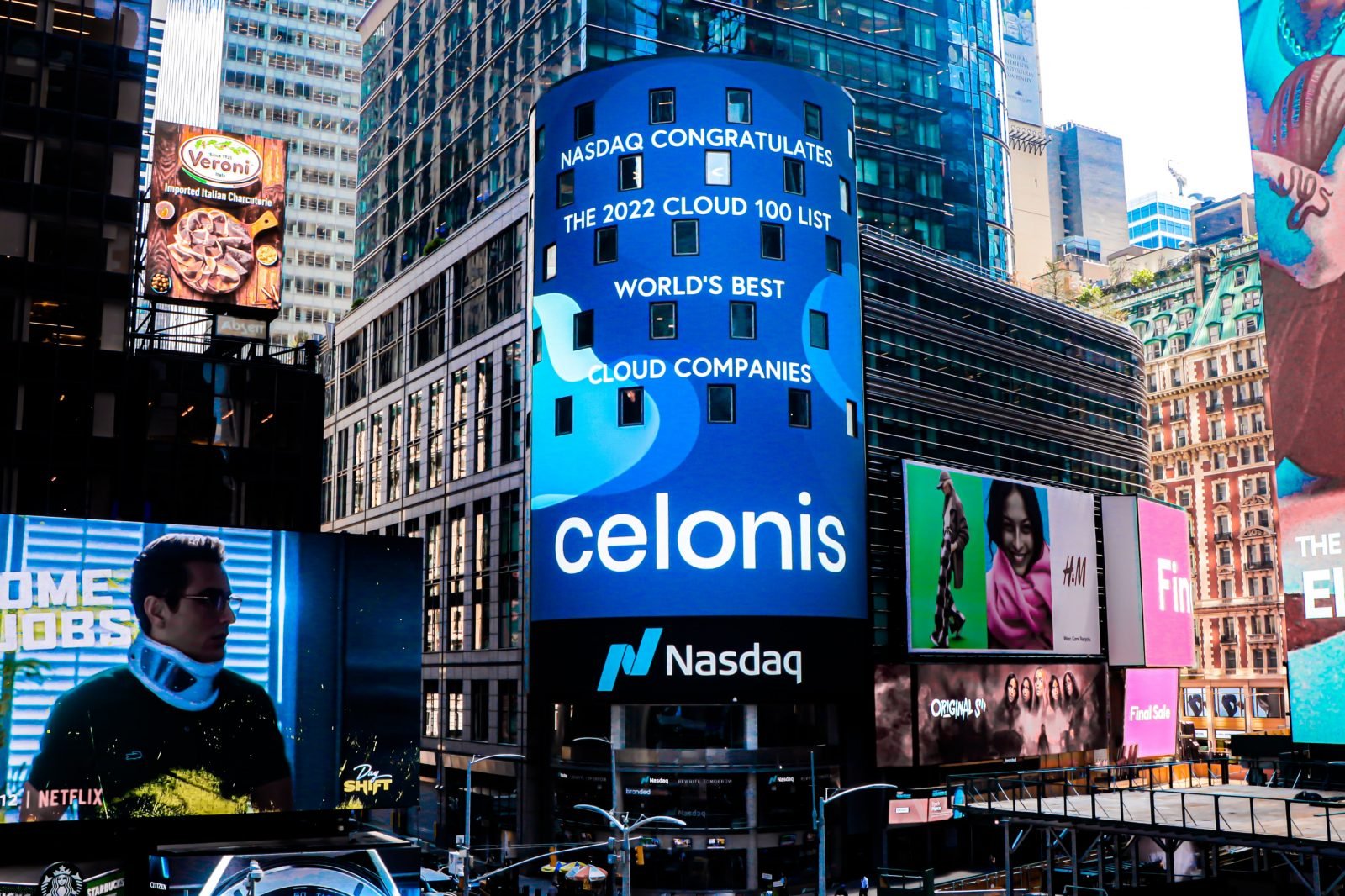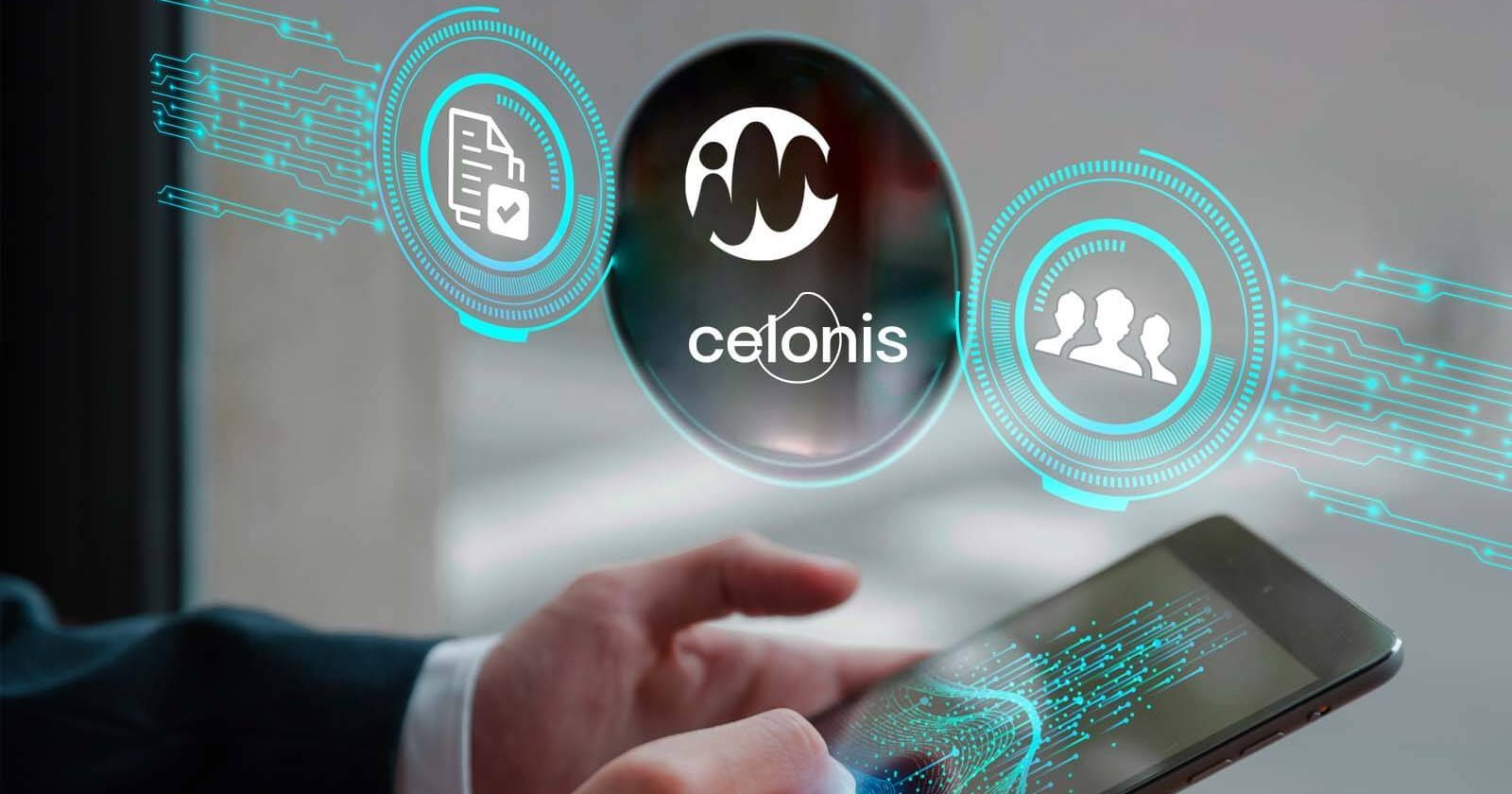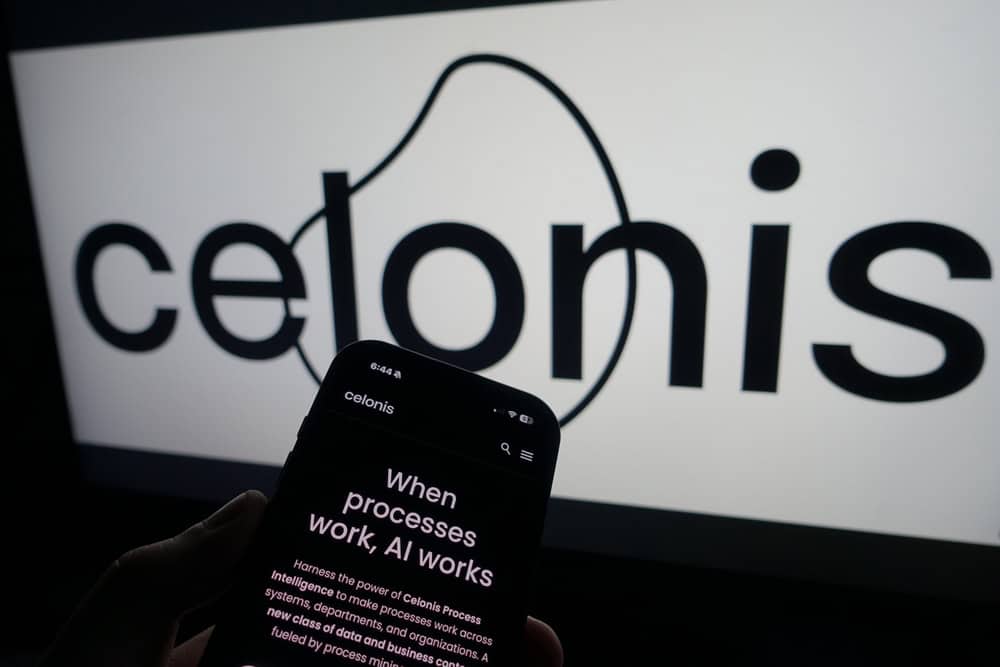From data to experience: Re-imagining People Strategy
Interview June 2023
Lea Mikus has global responsibility as Director for People Strategy and People Analytics at Celonis, a software player leading in process mining. With their Celonis Process Mining platform, the company provides their clients with a modern way to run their business processes entirely on data and process intelligence.
With data the very bread and butter of the company, Lea managed to bring those capabilities into HR through an EX approach integrated through the People Strategy. With a steep career progression, Lea is one of the most forward-thinking leaders in human capital management we spoke with, and in this interview we discuss how she works with employee resource groups.
How did Celonis start building EX and how are you now moving to the next level of maturity?
“We recently celebrated our 12th birthday as a company, and we’ve made significant progress, tripling our headcount during the pandemic. Joining the company during this period, there was a crucial need to establish a people strategy. Hypergrowth, while a blessing, very often comes with growing pains. Suddenly, you are in need of more advanced structures, such as career paths or a job architecture. During that time it becomes essential to bring the foundational HR elements in place for the company’s continued growth. Over the past three years, we’ve seized the opportunity to implement fundamental components of a typical people department. We’ve achieved a good foundation.

From my perspective, experience plays a pivotal role in every aspect of our daily lives: private and professional. For us at Celonis, it’s not merely another benefit; it’s integral to everything we do. We don’t have a specific function in place just for EX, and rather look at experience through the professional lens of everyone’s scope. We established our first, holistic people strategy in 2022. This project spanned over six months, aiming to take into consideration the present and – to some extent – anticipate the future. Looking at changes in human needs overall, we sought to identify trends and aspects crucial for our employees in the long run, making informed predictions for the next five to ten years.
We engaged in discussions with academics and analysts, as well as placing a strong emphasis on listening to our Celonaut community – listening is a core practice at Celonis. This collaborative effort resulted in the development of our people strategy. The strategic framework serves to encapsulate both the business objectives, outlining our direction as a company, and the employee perspective. Referred to as the Employee Value Proposition (EVP), it delineates what makes us unique today and outlines our aspirations for the future – essentially, defining who we aim to become as an employer. So, EX is captured within our people strategy, it is an essential part of our strategy, in fact.”
Who is responsible for EX right now, how did you structure the team?
“We’ve seamlessly integrated Employee Experience into every team and everything we do. Our organizational structure follows a setup with Centers of Excellence (COEs) and regional divisions. Operating globally is a crucial aspect for us; we prefer a unified approach across countries rather than individual initiatives. All our designs are crafted on a global scale, only with minor local deviations if need be, and this approach has proven to be effective.
Our global People Leadership Team reports to our Chief People and Culture Officer, and the people strategy is applicable to all of us working in the People & Culture department. Aligning with the EVP and our business priorities, every project must find its grounding within this framework; otherwise, we abstain from pursuing it.”
What kind of strategic pillars is EX supporting at Celonis?

“One of our key pillars as part of the EVP centers around Care and Community. In my role overseeing strategy and analytics, we delved into our data. With over 80% of our workforce being Millennials and Gen Z, and average age in the early 30s, we are looking at a cohort moving into the family-building years.
We know from listening to Celonauts many of them want to nourish children alongside their careers, and they’ll need sustained support from us to make that happen. It’s also consistent with our focus on creating robust opportunities for women and others long underrepresented in the tech industry. Paid leave helps women stay in the workforce.
So in June 2022, we launched a global family leave program, offering primary caregivers 24 weeks of full pay and secondary caregivers 12 weeks of full pay. This initiative aligns seamlessly with our strategy, emphasizing the care and community pillar, and it reflects a commitment to a global standard. Despite operating across 16 different locations with varying regulations, every Celonaut has access to the same parental leave program.
This not only demonstrates our dedication to equality but also places employee experience at the core of our initiatives. Taking it a step further, we recognized that it’s essential not only to provide leave options but also to support the return of new parents. Thus, we designed a learning pathway to facilitate the reintegration of returning parents into our work environment, assisting them in re-onboarding and seamlessly picking up where they left off.”
How are you involving employees in this co-creation process?
“The design and implementation of the parental leave program was truly a great example of co-creation at Celonis. Lead from within People and Culture, involving many colleagues across our various teams within our department. Simultaneously, we have Business Resource Groups (BRGs), which are voluntary, employee-led groups that drive impact, foster a diverse and inclusive workplace, and are backed by executive support.
Examples include Pride at Celonis, Women and Allies at Celonis and Parents at Celonis. The parental leave program was co-designed in collaboration with Parents and Women at Celonis. We sought input on their needs, considering the balance between impact and budgetary considerations. This close collaboration with the BRGs, ensured that the program aligned with our overall strategy and addressed the specific needs of our Celonauts. The BRGs played crucial roles in shaping this program by bringing insights from the daily lives and work experiences of our employees.
In general, when initiating a project like this, we follow a structured approach. We look at our people strategy, and the alignment to our business priorities as well as EVP, and leverage all quantitative and qualitative input we have available. We think about the desired impact and work backwards to make sure we have the right departments, employee groups and stakeholders involved in the process to generate buy-in from the beginning. Although we don’t explicitly term it as design thinking, we make use of some elements from that methodology.
Personally in my work, I am drawing from my consulting background, where I’ve been exposed to such practices. Our workshops often involve brainstorming, categorization, prioritization, and ultimately shaping the timeline for implementation. We also make use of personas as key tool in our approach. Designing personas inherently involves mapping out their journeys.
While it’s so ingrained in our daily work that it might not be immediately recognized as a distinct tool, the persona-journey combination is integral to our process. This tool, often taken for granted due to its seamless integration, plays a crucial role in understanding and tailoring our strategies to meet the diverse needs and experiences of Celonauts within our organization.”
What advice would you give to an HR leader who wants to get started with EX or wants to get started with a co-creation process to solve a specific challenge but doesn’t know where to start and how to prioritize?
“I always prioritize based on the potential impact. Identifying the areas where we can achieve significant wins is crucial. We then compare this with the implementation timeline. The impact needs to be high, but considering our fastpaced environment, a long implementation period, say two years, might not align with our ambitious pace. In our context, even three months can be perceived to be a relatively long timeframe. When we announce a program, like the parental leave initiative for example, people inquire about the launch date. So we need to be spot on when managing employee expectations.
From a data perspective, impact can be measured by different factors like population size, productivity drivers, or engagement drivers. Sometimes, we may choose to undertake three projects at the same time and strategically spread them across quarters to avoid launching everything simultaneously, for instance, spacing initiatives from Q1 to Q4. It’s all about managing expectations and how we frame the communication. What we’ve learned is not to announce the start of a project too early on but rather communicate closer to launch.
What stages take place during a 3-month EX project?
“We follow a 3-step approach. Ideation comes first, we create a working hypothesis and try to define an opportunity or problem we want to solve for. It must align with our strategic framework. This stage also includes gathering all data and insights to include in an early design draft co-creation brainstorm. At this stage, everyone is invited to assess the data and kickstart the co-creation process.
Conceptualization comes next, which is the creation of a concept for a product or initiative, also including validation testing. This involves engaging with various stakeholders, including focus groups like BRGs, our executive team, and our internal people department. The goal is to ensure that the solution makes sense and resonates effectively when we eventually launch.
Stage three is capturing everything from the official launch to the enablement of stakeholders and employees, hyper care and tracking the adoption. We continuously monitor if the solution meets the desired outcome. So, in summary, it involves these three key phases.”
How do you collaborate with other departments, such as facilities?
“We extensively collaborate with various departments because people topics are a universal concern. Our people initiatives are frequently on the agenda for our executive meetings, reflecting the founders’ commitment to creating an environment where all Celonauts can thrive.
In addition to this, collaboration extends to marketing, particularly in areas like brand, EVP, and talent marketing. We maintain a very close partnership within Celonis, emphasizing a unified brand rather than creating a separate employer brand. Communication is another key collaboration area. We place great importance on maintaining a consistent tone and language across internal newsletters, communication on program launches, and policy documentation.
Lastly, in the realm of facilities, termed as real estate and workplace services in our context, it falls under the purview of the people team. This integration has proven beneficial, with my colleague and peer, our Head of Real Estate and Workplace Services, reporting to our CPCO, ensuring a holistic approach that spans various aspects and yields positive results. This unified structure has been in place for over a year, closing gaps and enhancing overall experience.”
How do you measure the impact of EX?
“When assessing the impact of EX, we primarily rely on engagement scores, with Employee Net Promoter Score (ENPS) being one of the main metrics captured in our engagement survey. Additionally, we closely monitor attrition, viewing it as a non-traditional indicator of experience. High attrition might suggest a shortfall in the overall employee experience, prompting us to delve into specific reasons for termination.
To gain insights, our exit survey, conducted by business partners, explores dissatisfaction with the work environment, leadership, benefits, career development and related factors. This comprehensive approach aligns with our commitment to understanding the entire employee lifecycle. Moreover, we monitor external perceptions through platforms like Glassdoor. For new joiners, we conduct an onboarding survey, measuring their first weeks’ experience. We continue measuring at 60 days and 90 days. It is often that millennials and Gen Z have relatively short tenures, with both generations together averaging between two and three years. This is another reason why efficient and fast onboarding is essential.
How do you use tech for EX?
“That’s a great question because it really gets to the core of what I do. We manage various systems like Workday, Greenhouse for Recruiting, and several other tools, each serving specific data needs. However, combining these diverse data points is challenging, as you’re likely aware. What sets us apart is that we’re in a unique position to utilize our own software, Celonis, to make sense of all these data points. We centralize our data in a data lake, and then use our software to integrate information throughout the employee life cycle and across the organization.
Currently, we’re in the process of developing dashboards for organizational health, and real-time insights into program utilization. While our focus is more on reporting at this stage rather than predictive analytics, our vision is to venture into the predictive space as well.”
Do you have software development and analytics capabilities in your team?
“Yes, that’s an interesting aspect of our approach. We have a permanent member in my team, originally from our analytics department, who has been supporting us for the past nine months to lead this project. While we considered hiring a dedicated headcount, we decided against it. We believe in consolidating our data scientist skills in one place rather than dispersing them across departments. This way, we can leverage the expertise we have company-wide.
Over the past nine months, we’ve been working on building this project, closely collaborating with our colleagues from the finance team. There’s a significant overlap between finance and people data, especially when examining aspects like organizational health, forecasting, budgeting, headcount, and attrition.”
How do you navigate the plethora of HRIS adds-on?
“Addressing the multitude of HRIS add-ons has been a strategic consideration for us. We evaluated the market to determine whether it’s more practical to embark on the challenging task of developing a solution from scratch or leverage existing software – so a typical buy vs build analysis. For the moment, we decided to go for a bit of both. We’ve built our own analysis leveraging Celonis, but we have also ramped our reporting capabilities using Workday HCM and People Analytics.
As we continue to build, we keep our options open with the goal in mind for real-time, constantly updated, automated data models that not only support our day-to-day operations but also provide valuable insights into the future. The ambition is for our solution to be a 50-50 blend of addressing current needs and anticipating future requirements.”
What are the key aspects of success for EX at Celonis?
“One significant aspect of our approach is the close collaboration with our CEOs and the executive team, where the importance of people is consistently emphasized. Securing buy-in from top management is crucial. Another key aspect is recognizing that engaged employees thrive. Creating an environment that showcases our uniqueness as an employer and genuinely caring for our people plays a vital role.
An illustrative example is evident in our engagement survey, where we observed immense pride in our product. The question regarding belief in our product being best in class consistently receives an incredible amount of positive responses.
And this is an area where we saw an opportunity. While it’s fantastic that our employees recognize the capabilities of our product and believe in it, we also acknowledge that our product has the potential to contribute to a better future for humanity. For instance, there are use cases that directly impact sustainability. Recognizing this, we decided to seize the opportunity. Impacting the green line with our product is valuable, and we wanted to take it a step further.
Therefore, in 2022, we introduced the concept of ‘impact days’. These are three days a year when we virtually halt the entire company’s operations. During these days, every Celonaut can contribute to a social project of their choice. When you consider the cumulative impact of over 3,000 employees dedicating eight hours three times a year, it amounts to 72,000 hours of real-time impact.
One notable example is organizing hackathons with clients, especially non-profit ones, where we identify cases where our product can contribute positively. This initiative has been widely appreciated as it not only reflects our culture and values but also serves as a platform to explore new business angles, projects, and clients.”
What makes you most proud, from all the EX initiatives at Celonis?
“Parental leave is a standout initiative we’ve developed, and it holds significant importance not just for the company and our people, but also personally for me. I am also deeply committed to bringing data to the table, building a business case, and fostering a robust connection between the people department and the business to show how we can make a difference for our people.
To me, this type of collaboration aims to ensure the sustainable growth of the company and a successful long-term future. I firmly believe that people should be at the core of every company and strategy. Utilizing people data becomes a powerful lever in influencing not only our practices but also, hopefully, the entire industry. People data is business data.”
 If you could turn back time what would you do differently?
If you could turn back time what would you do differently?
“Taking a moment to reflect, in my career I’ve often worked in environments of rapid pace, which has its merits. However, when dealing with substantial organizational changes, team shifts, and transformative endeavors, it becomes imperative to step back and ensure everyone is on the same page. I’ve come to appreciate the necessity of this step, understanding the importance of gradually bringing people on board.
Everything you implement takes time to adopt in the organization. It requires a candid approach, coupled with attention to the transformational groundwork that precedes the actual initiation of change. This is the perspective I aim to emphasize.
I believe achieving buy-in, regardless of the stakeholder, holds tremendous significance. Emphasizing that transformation is a gradual process is crucial, and I consistently convey this message. Transformation isn’t concluded with the introduction of a new system, tool, product, or initiative; in fact, that marks its inception. Although the groundwork may have begun three to six months earlier, it’s essential to consider the entire implementation and transformation cycle.
This cycle initiates before the launch and extends, I’d say, for at least one or two years postlaunch to firmly embed something within an organization or an individual. Perhaps, considering it as a cycle or visualizing it on a change curve could be valuable, offering insights into the trajectory of these projects.”
What opportunities and challenges do you envisage in EX as a field of expertise?
“Employee experience in my mind is really the opportunity to get a foot in the door to see people at the heart and center of a company. There are so many tools available: journey mappings, personas – not everyone is thinking about people down to the essence of their human needs, what is important to them, how they think, feel and what they truly desire. Therefore, I believe that all those templates and toolkits which are used in the EX space can actually help bring everyone closer to the same page and focus on people being at the core of organizations.
As for a challenge, I believe employee experience should incorporate data. Avoiding being overly abstract is crucial, and while personas may seem somewhat intangible, the process of designing them has to be thorough. Making these aspects tangible and ensuring they are taken seriously is, in my opinion, the most significant challenge.”
How do you keep being inspired in your own learning journey?
“What I enjoy doing is networking because every conversation brings a lot of inspiration. Even today, speaking with you and gaining insight into your thoughts and projects is fascinating. In the analytics realm, I’ve connected with leaders to tap into their experiences, understand how they structure their functions and navigate challenges.
By collecting insights from various sources, I can determine what makes sense for specific situations, leveraging knowledge and potentially accelerating the learning process. I consider myself a curious learner and an open networker. Asking people for insights has no downside, and I’ve found many individuals who are so open and willing to share their knowledge and help. I aim to reciprocate and assist others as well.”

Interview by Sander de Bruijn
Sander is an experienced leader in Employee Experience, Customer Experience and Marketing & Communications with a footprint in Financial Services, Telecom, Professional Services, Media and Entertainment. Over the last 20 years, Sander has managed a vast variety of EX and CX initiatives, ensuring delivery in complex business environments to thrive to make measurable impact.
For more than 15 years Sander has built and led high performing teams with strong people skills and strong personal involvement. For Sander, working as a consultant and coach with (HR) Leaders and Employee Experience professionals allows to do what he loves; making the complex simple and helping others thrive to make measurable impact.




